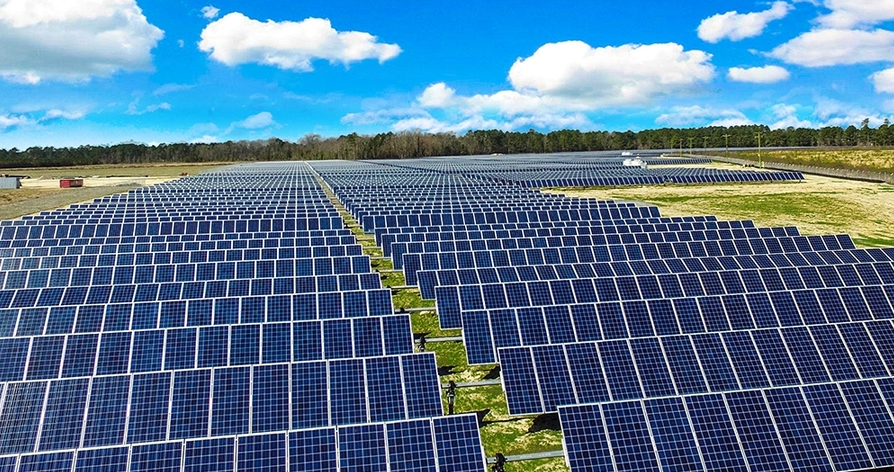Key Takeaways
- Discover the advantages and obstacles linked to home solar energy.
- Discover the various components that make up a solar power system.
- Investigate funding alternatives and benefits offered for solar systems installation.
- Get insights into maintaining and optimizing your solar setup.
Table of Contents
- Introduction to Solar Energy
- Components of a Solar Power System
- Benefits of Solar Energy for Homes
- Overcoming Challenges in Solar Installation
- Financing Options and Incentives
- Maintenance Tips for Solar Panels
- Future Trends in Solar Technology
- Conclusion
Introduction to Solar Energy
As the international community searches for sustainable answers to its increasing energy needs, solar energy shines brightly as a symbol of optimism. This renewable power source offers an opportunity to reduce electricity costs, diminish environmental impact, and ensure a sustainable future. Homeowners across the United States increasingly turn to solar installations, recognizing its ability to transform rooftops into powerhouses.
Solar installations have not only become more accessible but also evolved to be more innovative and efficient. Regions that enjoy abundant sunlight, including Colorado, present ideal conditions for maximizing solar output. By transitioning to solar energy, individuals can significantly contribute to cleaner air, enjoy tangible savings on energy costs, and enhance their real estate’s attractiveness and value. Solar energy is more than just a property investment; it is a commitment to a more sustainable world.
Components of a Solar Power System
Understanding how solar systems work is fundamental when considering solar power for your home. At the heart of every solar setup are solar panels. These panels absorb sunlight and convert it into direct current (DC) electricity. However, homes operate on alternating current (AC) power, where the inverter comes into play. The inverter plays a vital role by transforming DC electricity into AC electricity, enabling it to be used in homes. Options such as Solar Panels Colorado allow individuals to harness solar energy efficiently at home.
A sturdy mounting system is equally vital. It ensures the panels are secured at optimal angles and positions to capture maximum sunlight throughout the day. Additional components, such as monitoring systems, offer real-time insights into energy production and system status, allowing homeowners to swiftly pinpoint and address any issues. Understanding these elements ensures that your foray into solar solutions is efficient and effective.
Benefits of Solar Energy for Homes
The transition to solar energy comes with an array of compelling advantages. Chief among these is the marked reduction in monthly utility bills. Solar panels generate electricity directly from sunlight, so homeowners can significantly reduce reliance on traditional power grids. Moreover, homes with installed solar energy solutions often see increased market value. Potential buyers view solar-powered homes as forward-thinking, eco-friendly investments.
Solar energy contributes to environmental conservation beyond individual savings and property value enhancements. It lowers greenhouse gas emissions by lessening dependence on fossil fuels, which is crucial in combating climate change and fostering a healthier planet for future generations. The undeniable peace of mind comes with knowing one’s energy consumption is not at the expense of the environment.
Overcoming Challenges in Solar Installation
Despite its benefits, solar energy adoption is not without its challenges. The initial installation cost can be a significant barrier for many. However, this is mitigated through advantageous financial mechanisms and long-term savings. Structural factors, such as roof type and shading, also influence the feasibility of installations. Proper evaluation and planning are essential to address these factors effectively.
Numerous resources are available for homeowners daunted by the prospect of installation. For instance, this guide offers detailed information on preparing for and optimizing solar installations. Technological advancements continue to simplify these challenges, making solar energy more attainable and adaptable.
Financing Options and Incentives
Financing can play a pivotal role in the decision-making process for solar installations. Homeowners have several options: they can purchase their solar panels outright, opt for solar loans, or engage in leases and Power Purchase Agreements (PPAs). Each method has unique advantages that cater to different financial situations and personal preferences.
In addition to financing, numerous federal, state, and local incentives are designed to make solar installations more affordable. Tax credits, rebates, and performance-based incentives can significantly offset initial costs. For detailed guidance, the National Renewable Energy Laboratory offers comprehensive insights into the incentives available, tailoring solar energy adoption to a broad range of needs and budgets.
Maintenance Tips for Solar Panels
Maintaining your solar panels is integral to sustaining their performance and longevity. Regular cleaning is essential for removing dirt, leaves, and other debris that might obstruct sunlight absorption. It’s recommended to schedule professional inspections annually or bi-annually to ensure all components function correctly and efficiently.
Advanced monitoring systems are also invaluable. They offer immediate information regarding your system’s performance, notifying you of possible problems before they worsen. These proactive actions guarantee that your solar energy system functions optimally for its entire lifespan, protecting your investment.
Future Trends in Solar Technology
The solar industry is poised for exciting innovations that enhance performance and appeal. Solar shingles integrate seamlessly with home architecture, offering a sleek aesthetic and cutting-edge functionality. Improved battery storage options are transforming solar energy, enabling homeowners to save surplus power for use on cloudy days or at night.
These advancements signify a bright future for solar energy, making it ever more efficient and accessible. Staying informed about these trends can help homeowners make savvy decisions that maximize their solar energy systems’ potential, ensuring sustained savings and environmental benefits.
Conclusion
The shift to solar energy is more than a trend; it’s a movement towards sustainable living. By delving into solar solutions’ components, advantages, and considerations, homeowners can make informed decisions that yield significant financial and environmental rewards. In embracing solar energy, individuals are not merely investing in their homes but contributing to a cleaner, more sustainable future.

